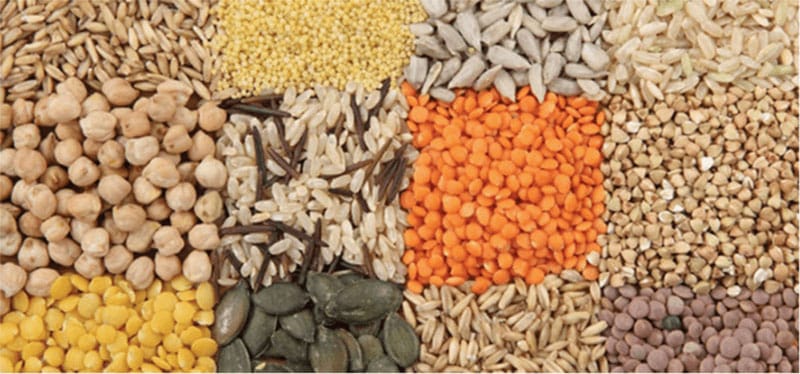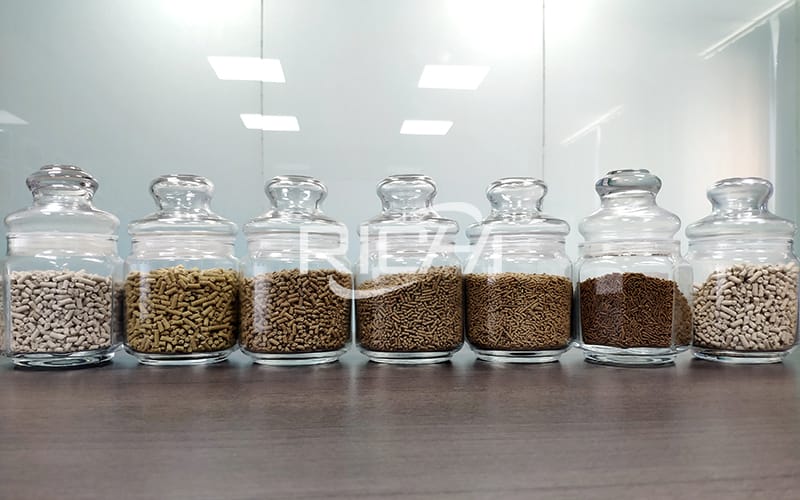How to control the raw material storage quality of the animal feed factory?
In the process of manufacturing various raw materials into feed products in animal feed mill plant factories, the quality control of raw materials storage is very important. The quality control of raw material storage is not only related to the quality of finished feed products, but also plays a vital role in the control of feed production costs. Let's briefly talk about the quality control of raw material storage during animal feed production process.

1. Selection of the storage method of raw materials
(1) According to the characteristics of the stored raw materials, choose the warehouse type to be economical and reasonable. For example, you can choose a vertical silo for bulk corn, and a house-style silo for bagged soybean meal.
(2) Choose storage area according to output, variety and quantity of raw materials.
(3) Reasonably configure the location of the silo to facilitate management and prevent mixing and pollution.
2. Problems that should be paid attention to when storing raw materials
(1) Prevent damage to feed ingredients
Cereal raw materials damaged by mechanical damage are more susceptible to deterioration by insects and molds.
(2) Prevent heat and mildew of feed ingredients
Under the production conditions of the feed factory, it is impossible to completely prevent the deterioration of the feed ingredients. However, timely detection of problems, accurate grasp of the causes of feed deterioration, and timely effective measures to control them can minimize the harm. Check regularly, judge the condition of raw materials based on the smell and temperature in the warehouse, or monitor with automatic temperature measuring instruments.
①Control the moisture content of incoming raw materials
Moisture is an important indicator for the safe storage of feed ingredients. High moisture content can easily cause mold and insect pollution, produce large amounts of mycotoxins, deteriorate feed quality, and cause livestock and poultry diseases. Under normal circumstances, when the moisture is below 10% to 13%, it can inhibit the production of most microorganisms and insects.
②Relative humidity
For standard warehouse materials, the moisture content of the storage material mainly determines the relative humidity of the air. In order to prevent the raw materials from regaining moisture, the relative humidity of the general material warehouse should be below 65%, and the moisture content of the raw materials is close to the safe water content.
③Temperature
Above 30℃, the stored materials are easy to age and suffer from pests; below 15℃, aging can be delayed to avoid pests. The temperature of the material should not exceed 30℃ in summer, and it should be controlled within 20℃ in other seasons.
④Closed ventilation
In order to avoid moisture absorption and resurgence and temperature rise of the stored materials, it is advisable to store the dry raw materials in a closed manner. For the warehouse with high humidity in the warehouse or after the high temperature season, attention should be paid to ventilation and heat dissipation.

⑤Prevention and treatment of fever
Low water content, low impurities, dry storage, and low temperature are the basic requirements to prevent storage materials from heating up. To meet these requirements, the following points must be achieved: check and repair the storage materials to ensure that they do not leak or damp; Strengthen heat-proof and moisture-proof work, such as thickening cushion, ventilation, airtightness, etc.; separate new materials, separate materials with high water content and low water content; always adhere to the storage method of "push the old and store new" for the stored materials; check the material temperature frequently Change with moisture.
Handling of heating materials: exposure to the sun or spreading to dry; turning over the warehouse, that is, changing the silo or material pile; opening up the warehouse or drilling a well, pulling the material pile from the middle or digging a round well with a folding strip from the heating part; change Stack shape or reduce the height of the material stack, and the bag can be stacked in the shape of "non", "well" or "semi-non"; use a dryer or blower to treat the heating material.
⑥Prevent insect bites and rodent damage
Use mechanical and chemical control methods to deal with the storage hazards of the granary, and pay attention to the prevention of rodents, because insect pests or rodent bites damage grains and make molds easy to multiply and cause mildew. The insects must be regularly exterminated to ensure the storage period of the feed.
3. Animal feed production plants should establish a product storage management system
(1) The storage management system should include storage location planning, stacking methods, stack location identification, warehouse entry and exit management, warehouse inventory, environmental requirements, pest prevention, warehouse safety, etc.;
(2) The entry and exit records should include information such as the name of the raw materials, specifications or grades, date of production, quantity and date of entry, and custodians;
(3) The stack location identification card should include information such as the name or code of the raw material, the date of production or batch number, and the inspection status;
(4) An appropriate distance should be kept between the stacking positions of different products;
(5) Substandard products and expired products should be stored separately and clearly marked.
The cost of feed ingredients accounts for about 90% of the compound feed. Therefore, research on the quality control of feed ingredients storage is extremely important to ensure feed quality and improve feed quality. If the raw materials are stored, it can be fully achieved. The above points are believed to have a good effect on the control of processed feed products and feed costs.
Several common animal feed raw materials
As energy feed, mainly corn, rice bran, bran, dried sweet potato, etc.; protein feed mainly includes cotton cake, vegetable cake, soybean cake and other cakes; coarse feed mainly includes vetch meal, vegetable stalk meal, corn stalk, etc. ; Mineral feed mainly includes bone meal, eggshell meal, shell meal and so on. When formulating, the above-mentioned various kinds of raw materials should be selected from 2 to 3 kinds respectively, and matched in a certain ratio to achieve the purpose of supplementing each other with nutrients.
Corn, wheat, barley, broken rice, wheat flour, bran, fish meal, soybean meal, peanut meal, cotton meal, rapeseed meal, yeast meal, calcium hydrogen phosphate, calcium carbonate, salt, copper sulfate, ferrous sulfate, Manganese sulfate, potassium iodide, zinc oxide, sodium selenite, cobalt chloride, fat-soluble vitamins A, D, E, K, B vitamins, synthetic lysine, methionine, threonine, chromatic acid, drugs, repellent Insect agents, antifungal agents, antioxidants, flavoring attractants, enzyme preparations, binders, etc.
Hay, straw, green fodder, silage, corn, sorghum, barley, oats, rice, bran, roots, tubers, fruits, vegetables and slag, bone meal, eggshell meal, shell meal, stone meal, Calcium carbonate, calcium phosphate, dibasic calcium phosphate, salt, magnesium sulfate, vitamins A, D, E, niacin, iron, zinc, copper, manganese, iodine, cobalt, selenium, etc.
The main raw materials of sheep energy feed are: corn, sorghum, barley, etc. The main raw materials of protein feed are: soybean meal, cotton meal, peanut cake and so on. The main raw materials of mineral feed are: bone meal, salt and baking soda.
The protein requirements of fish feed are relatively high, so the proportion of protein raw materials in the raw materials will be higher. The main protein raw materials are: fish meal, soybean meal, ddgs, and various oil crop seeds that are actually pressed. In addition, the main raw materials commonly used in feed are: corn, wheat bran, secondary flour, rice bran and so on.
If you want to built one complete pellet production line in your country, pls send the inquiry to us. We will customized design according to your requirement.



